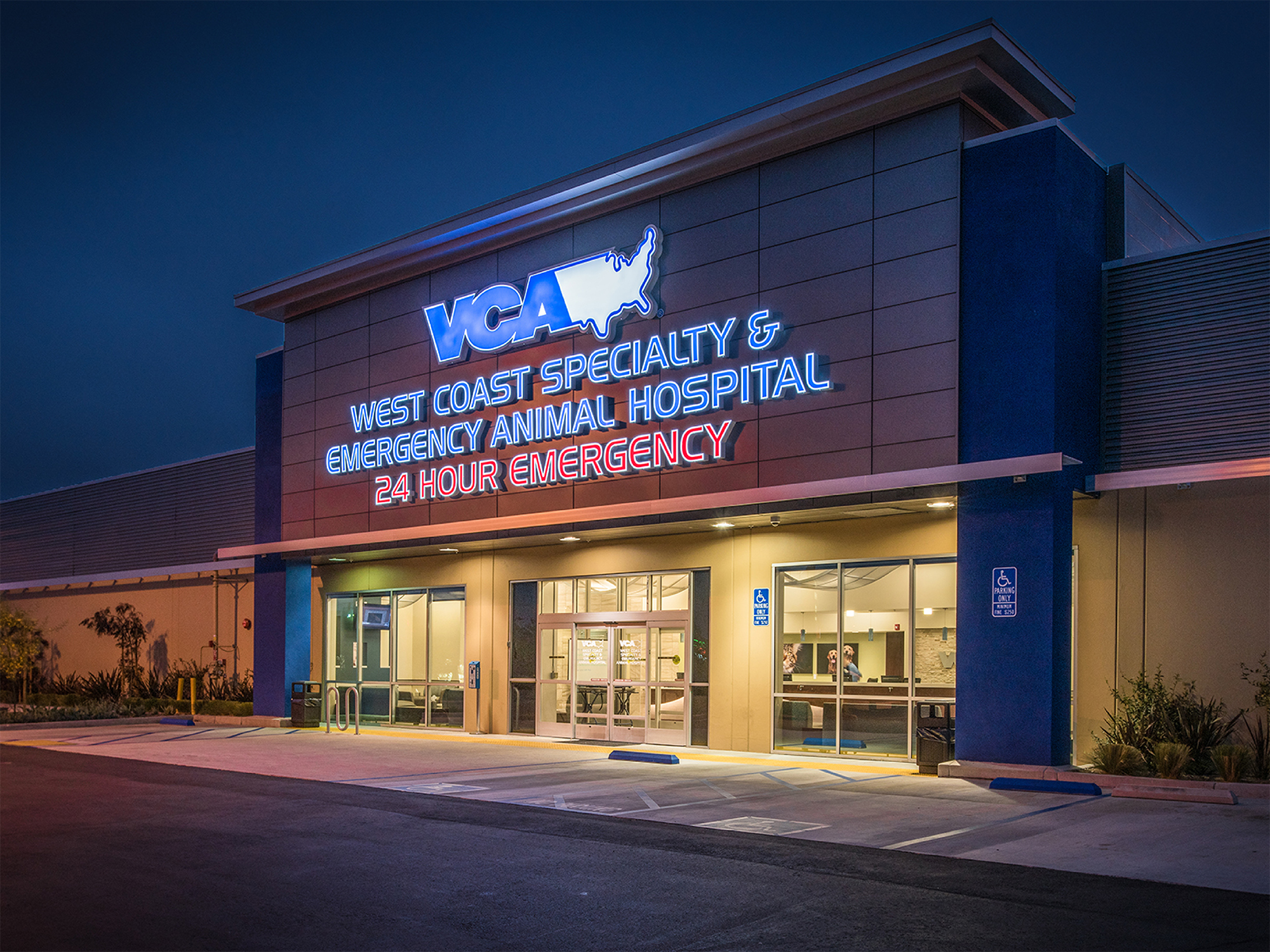Hospital design that supports advanced specialty care
The architecture, design and construction teams transformed a pre-existing structure to house the specialty veterinary hospital—a former Staples building that offered a site with great visibility, easy access for clients and lots of parking just half a mile from the previous facility. Richard Renschen was the principal design architect and Breanna Prater, Dave Russell and Suri Aveja, also from MD Architects, P.C., located in Indianapolis, Ind., were designers for the project.
The former box store got a dramatic overhaul, plus an addition to accommodate radiation therapy. “It’s the potential that the new building provided that was so exciting for our team,” says Dr. Walters. “It offers such opportunity to add specialists, attract great team members and practice next-level medicine.”
Designing for care
Changes in medical requirements top the list of design considerations for all VCA building projects, says Charles Nicholls, Vice President of Construction for VCA. And VCA West Coast Specialty and Emergency Animal Hospital was no exception to that rule. “Hospitalized animals get runs and cages instead of beds, but except for that it could be a human hospital,” Nicholls says.
Just like in a human hospital, you’ll find X-ray machines and MRI and CT scanners for diagnostics. There’s a linear accelerator, which is used for radiation treatment for pets with cancer. They built in special systems that deliver 95 percent to 100 percent air purity in the surgical suites. And the hospital has dedicated spaces for departments that provide cardiology, ophthalmology, neurology and more medical specialties. “Referring doctors and their clients count on this team to deliver high-level medical services—and the right facility helps the medical team fulfill that expectation,” Nicholls says.
Unlike human patients, though, sick pets don’t understand why they’re in a new space, undergoing procedures and meeting new people. And they’re particularly sensitive to the sights, noise and smells of their environment. “At its conception, the VCA West Coast design was one of the first that committed to animal friendly design elements, giving particular focus to managing potentially problematic stimuli,” says architect Richard Renschen, who founded MD Architects—a firm that has designed more than 180 projects focused on animal care nationwide. “For example, the main axis of the facility provides a sound buffer between the public and medical spaces. And the waiting room, patient ward, and main treatment space offer separate canine and feline areas to reduce patients’ fear and anxiety and potential aggression.”
“We also think about our footprint on the planet,” says Nicholls, who has overseen hundreds of veterinary hospital expansions, remodels and relocation projects in his time at VCA. “We want our buildings to be efficient, which drives our choices around insulation, light fixtures, materials, and mechanical units.”
“This particular project reused an existing facility, thereby reducing the impact of construction pollution and land disturbance that’s typical of new development.,” says Renschen. “We also incorporated new landscape beds with native plant species, which use less water and act as filters to reduce stormwater and polluted run-off to municipal drains. And we removed pavement adjacent to the building and installed new green space which provides shade, helps with site drainage, and serves as a relief yard for patients.”

Supporting collaboration
Perhaps most powerful, the new facility collects the medical resources of VCA West Coast Specialty and Emergency Animal Hospital in one beautiful building. “We’re one of the only specialty centers that offers all three cancer specialties in the VCA network: medical oncology, surgical oncology, and radiation oncology,” says Dr. Walters. “That means our team can give a pet owner whose pet has cancer three different opinions from those perspectives and the most tailored treatment available. And we replicate that kind of medical collaboration across other specialties. For example, a pet might need care that includes both internal medicine and surgery. Or surgery and neurology. Having all the right veterinary expertise under this one roof facilitates the best possible collaboration on complicated cases.”
While building a hub for medical expertise served as the umbrella goal, the team also considered every detail that could help provide better medicine. One small example: When you admit a trauma patient, every second counts. So they straightened a hallway to make the path that gets pets to triage just that much faster. “We also have more surgery rooms, which means we can let patients recover for a while, and they move to recovery in a little better condition,” says Dr. Walters.
“It’s so nice to be recognized for this facility,” says Dr. Walters. “It’s a great space to work in. It’s a nice environment for clients, when we go back to having clients in the building. I appreciate that it’s comfortable, airy, and open—it’s a pleasant place to work and to visit. But the most important thing is that it supports the level of medicine and client service that we provide. It’s always about the pet at VCA. This fantastic facility supports our work to give pets and people the care they need, and that’s what a building should do.”
Images by Eric Meyer, PhotoByMeyer LLC, Custom Photography and Video www.photobymeyer.com provided courtesy of MD Architects, P.C. (www.mdarchitects.com)

